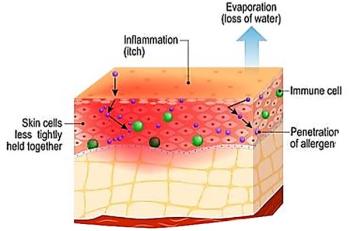
Genes Matter in Progression of Macular Degeneration
BOSTON -- The risk of progression for advanced age-related macular degeneration may involve common variations in two genes, an effect amplified by risk factors such as smoking and obesity.
BOSTON, April 24 -- The risk of progression for advanced age-related macular degeneration may involve common variations in two genes, an effect amplified by risk factors such as smoking and obesity.
Among more than 1,400 patients taking part in the Age-Related Eye Disease Study, common polymorphisms in the genes CFH and LOC387715 were independently related to progression of age-related macular degeneration, even after adjustment for other risk factors, found Johanna M. Seddon, M.D., Sc.M., of Tufts-New England Medical Center here, and colleagues.
"These two common variants were both associated with age-related macular degeneration progression, controlling for demographic and environmental risk factors, which underscores the need to discourage smoking and control body weight, regardless of genotype," the investigators wrote in the April 25 issue of the Journal of the American Medical Association.
In previous studies, including one by Dr. Seddon and colleagues, single-nucleotide polymorphisms in CFH (the gene on chromosome 1 that encodes for complement factor H) and in the LOC387715 gene on chromosome 10 have been associated with progression to advanced forms of macular degeneration with visual loss.
In the current study, the authors combined genotypic analysis with prospective follow-up data to see whether the presence of the polymorphisms, labeled CFHY402H and LOC387115A69S, could be predictive of progression to advance maculopathy and visual loss.
They evaluated 1,466 participants in the multicenter study, which ran from 1990 to 2001. The patients, who ranged from 55 to 80 years old at entry, had macular degeneration determined by fundus photography.
Progression during the mean 6.3 years of follow-up was defined as newly diagnosed advanced macular degeneration (geographic atrophy, exudative disease, or macular degeneration causing visual loss) in one or both eyes during the course of the study. The genotypic analysis was conducted in 2006.
The authors looked at nine combinations of polymorphisms between the two genes, involving various pairings of the C alleles associated with risk for CFH, and T alleles associated with risk for LOC387115.
They found that "the CFHY402H and LOC387115A69S polymorphisms were each independently related to progression from early or intermediate stages to advanced stages of age-related macular degeneration, controlling for demographic factors, smoking, body mass index, and Age-Related Eye Disease Study vitamin-mineral treatment assignment."
Patients who possessed the CFH polymorphism and were homozygous for the risk genotype (C/C) had an odds ratio for progressive AMD of 2.6 (95% confidence interval, 1.7-3.9) compared with those with other genotypes (T/T or C/T, P
"However, individuals with the risk genotype, if identified and appropriately advised, may be more motivated to adhere to healthy lifestyle habits, which are known to be related to a reduced risk of age-related macular degeneration."
The authors noted that there could be other, undetected risk factors that might explain the associations they saw between genotype and risk for disease progression, but pointed out such factors would not to be related to smoking, BMI and to macular degeneration to account for the strength of their findings.
Dr. Seddon is listed as inventor on a US patent application regarding biomarkers for AMD.
Newsletter
Enhance your clinical practice with the Patient Care newsletter, offering the latest evidence-based guidelines, diagnostic insights, and treatment strategies for primary care physicians.
























































































































































































































































































